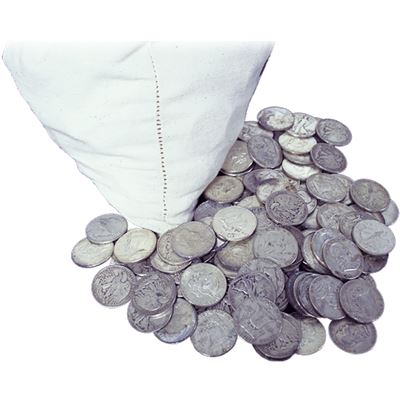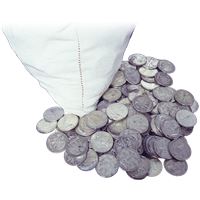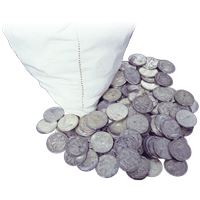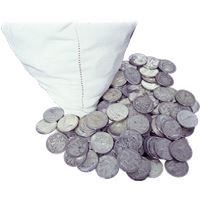90% Junk Silver Coins - $1 Face Value (coins may consist of quarters, halves or dimes)


| Qty | Check / Bank Wire |
Crypto
We are now accepting Bitcoin (BTC), Bitcoin Cash (BCH), Ethereum (ETH), Litecoin (LTC), Dai (DAI), and USD Coin (USDC) as a payment method on our website!
|
Credit Card |
|---|---|---|---|
| 1+ | $55.11 | $56.21 | $57.04 |
Product Highlight:
- 90% silver coins
- $1 face value per bag
- Minted in 1964 or earlier


Buy 90% Junk Silver Coins - $1 Face Value (coins may consist of quarters, halves or dimes)
Gainesville Coins has no minimum purchase level for orders of any type. We are one of the few online bullion distributors who will sell you as little as $1 face value junk silver. We recognize that not everyone can buy junk silver in $100 or $1,000 face value bags (though we sell those too.) Make Gainesville Coins your go-to source to buy pre-1965 90% silver coins.
Product Details
- Coins struck from 90% pure silver (.900 fine silver)
- Circulated coins sometimes called "junk silver"
- .715 troy ounce of silver per $1 face value
- Mix of dimes, quarters, half dollars
- All coins minted 1964 or earlier
- Each bag contains $1 face value of silver coins
- Can be purchased in multiples
- Great way to get exposure to physical silver cheaply
Buy Gold and Silver Bullion Coins Online Fast, Easy, and Securely With Gainesville Coins
Gainesville Coins is your trusted source for purchasing precious metals at the lowest prices. Orders can be placed online 24/7 or by calling us Monday - Friday at (813) 482-9300 from 9am until 6pm EST.
We accept many different forms of payment including Visa, MasterCard, Discover, American Express, personal & business checks, money orders, cashier's checks, and bank wires.
All of our shipments are sent discreetly with fully insured shipping until the time of delivery.
Gainesville Coins customers enjoy no minimum orders, no cold calls and no commission sales people.
There is no need to worry about the price of gold and silver moving as your prices are locked in at the time of your order.
With over $10 billion dollars in trusted transactions since 2006, Gainesville Coins is one of the most trusted gold and silver bullion dealers worldwide.

Specification
Related Products
Customer Ratings & Review
Review This Product
Share your thoughts with other customers.






